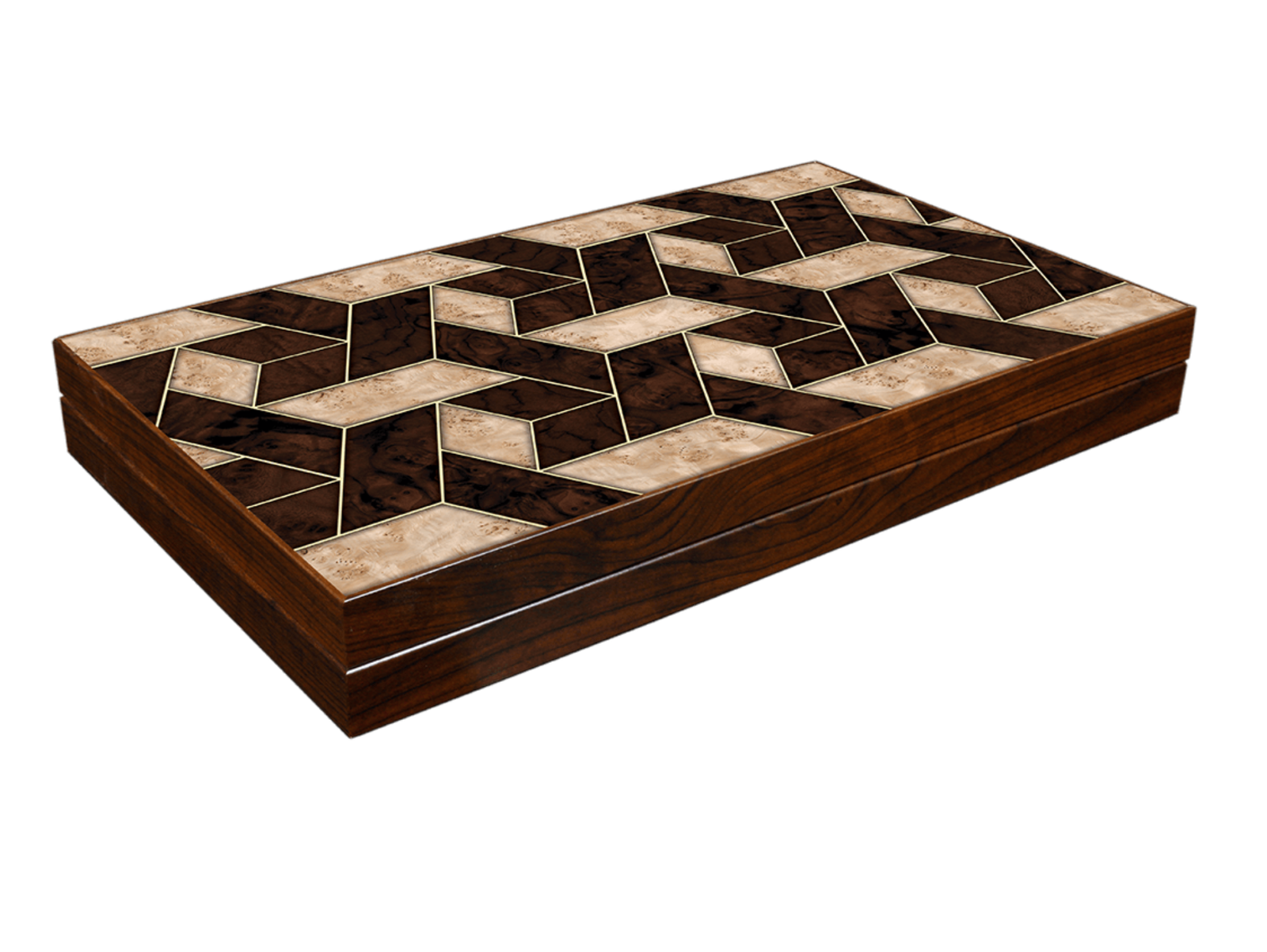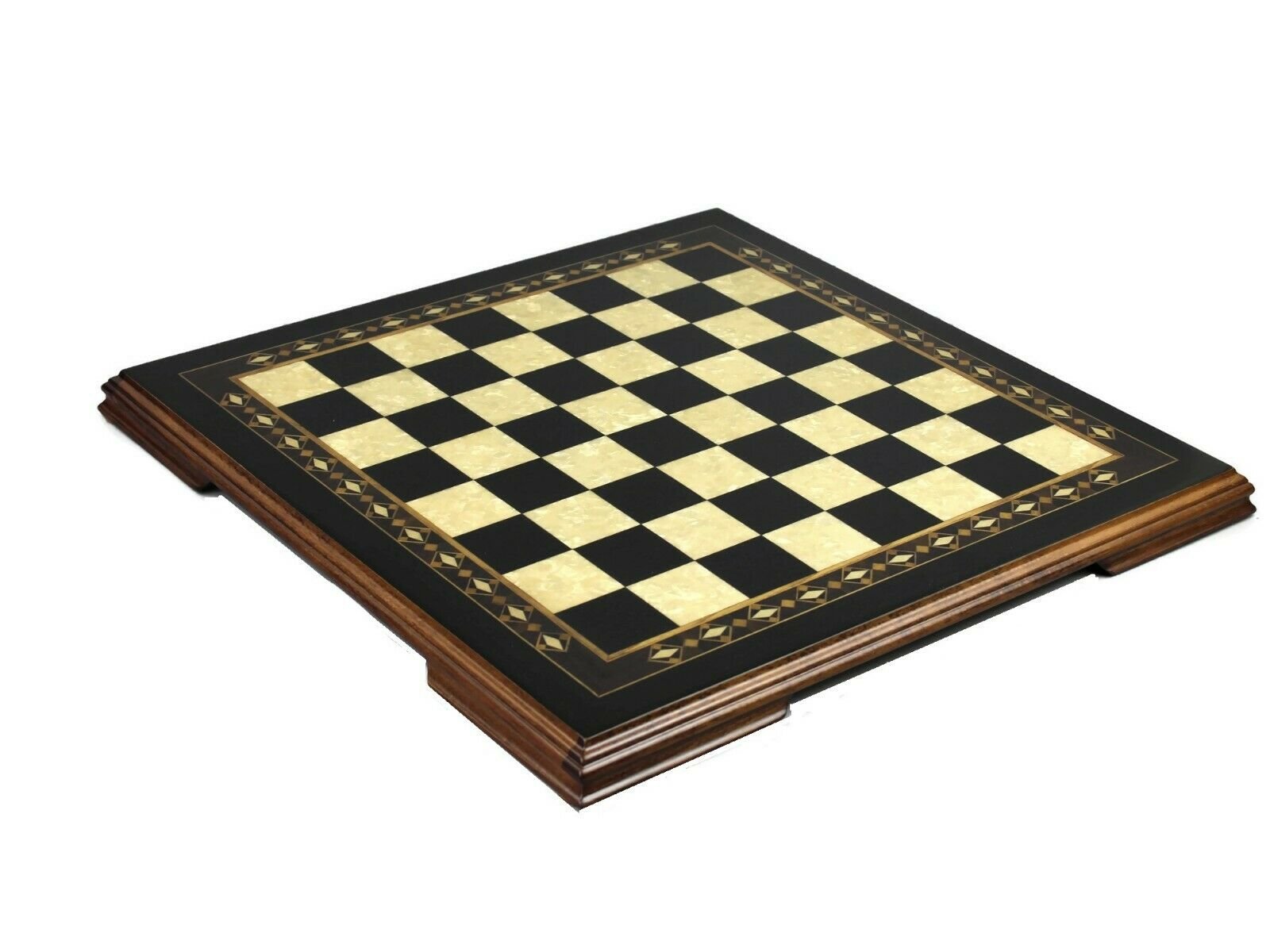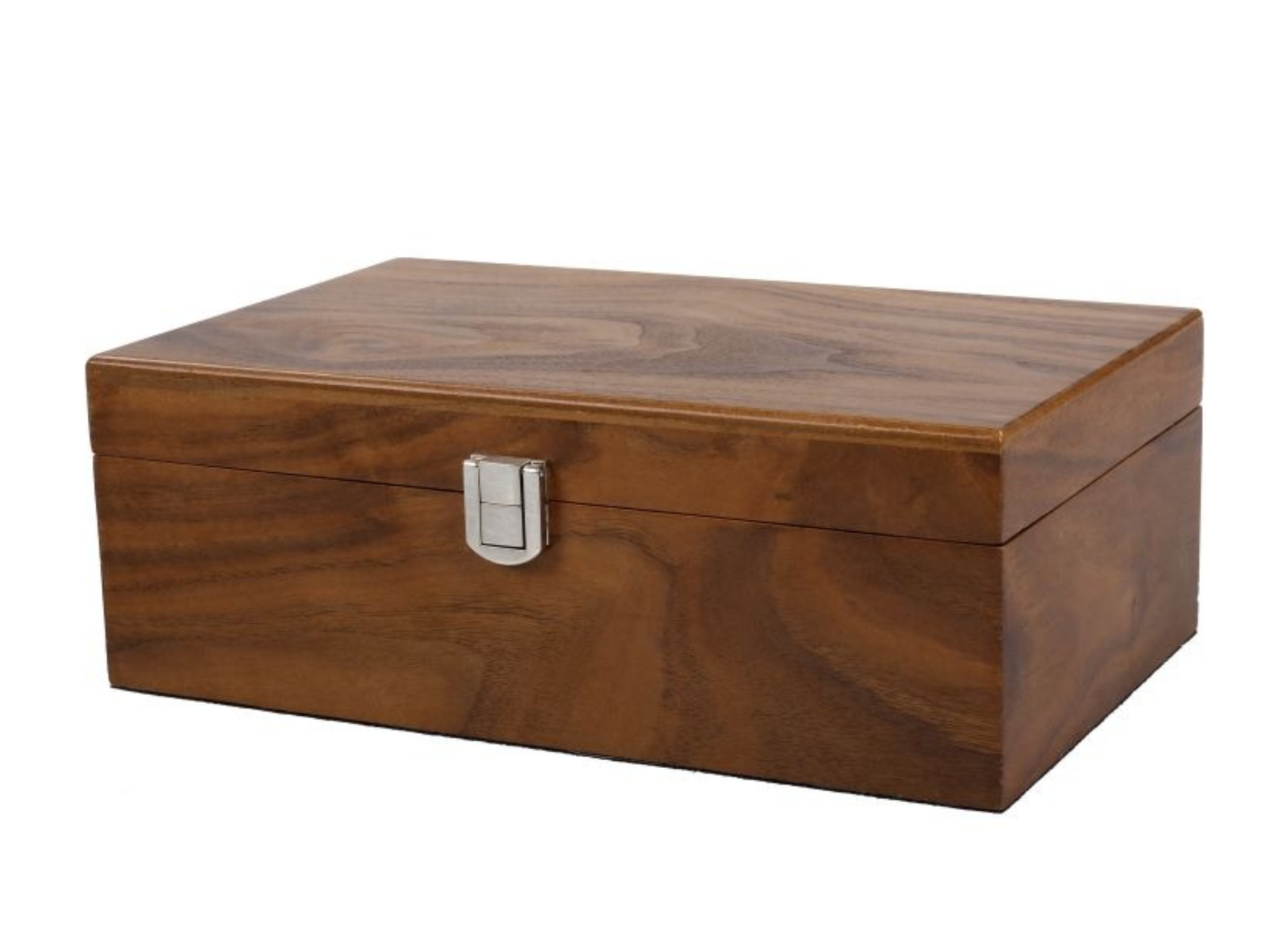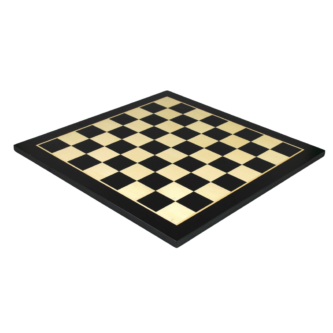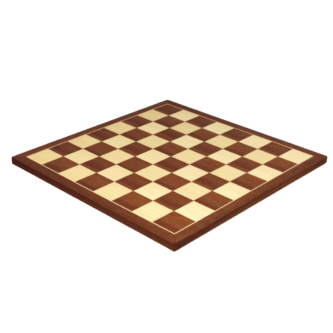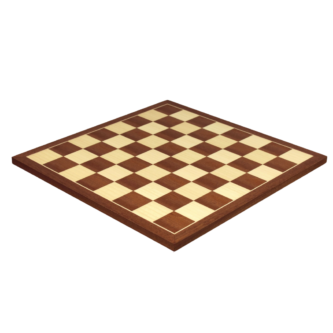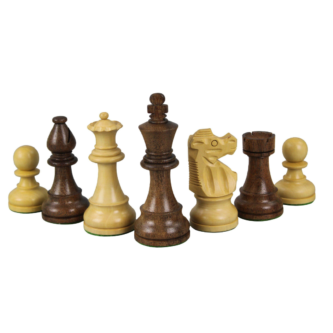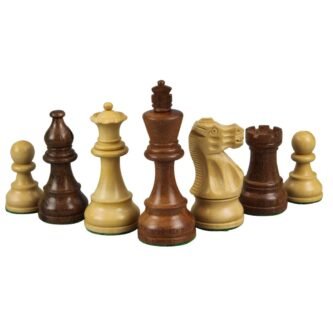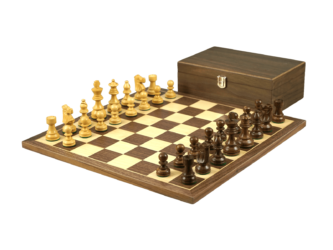Economy Range Chess
Cheap Chess Set
Introduction: Chess, a timeless game of intellect and strategy, has captivated the hearts of millions worldwide for centuries. Whether you’re a novice or a seasoned player, the allure of this classic pastime remains unwavering. Fortunately, you don’t need a lavish budget to experience the joys of chess. In this article, we’ll delve into the realm of budget-friendly chess sets, exploring their materials, the least valuable pieces, the ideal chess board, and the typical duration of a captivating chess match.
Which chess sets are cheapest?


When looking for an affordable chess set, plastic and cardboard sets are excellent choices that strike a balance between cost-effectiveness and quality. Let’s explore the benefits of each type:
Plastic Chess Sets:
- Cost-Effective: Plastic chess sets are among the most budget-friendly options available. Their mass production and widespread availability contribute to their affordability.
- Durability: Plastic pieces are quite sturdy and can withstand regular use. This makes them suitable for beginners and players who engage in frequent games.
- Lightweight: The lightweight nature of plastic pieces makes them easy to handle and move around the board, especially for younger players or those with mobility challenges.
- Wide Variety: Plastic sets come in a wide range of designs and styles, from traditional Staunton pieces to themed sets featuring popular characters or historical figures, adding an element of personalization and fun.
Cardboard Chess Sets:
- Economical: Cardboard sets are often the most economical option available, making them an ideal choice for those on a tight budget or those who want to test the waters before investing in a more expensive set.
- Portable: Cardboard chess sets typically come with foldable boards, allowing for easy portability and storage. This makes them perfect for travel, picnics, or playing in different locations.
- Lightweight: Similar to plastic sets, cardboard sets are lightweight and easy to transport, making them convenient for players on the go.
- Environmental-Friendly: Cardboard is a recyclable material, making these sets a greener option for environmentally conscious individuals.
Both plastic and cardboard chess sets offer an excellent entry point into the world of chess. They are popular choices for beginners, casual players, and those seeking a budget-friendly way to enjoy the game. While they may not have the intricate craftsmanship of higher-end sets, they more than make up for it with their practicality, accessibility, and affordability, allowing chess enthusiasts of all ages and backgrounds to experience the joy and challenge of the game without breaking the bank.
What are cheap chess sets made from?


Cheap chess sets are predominantly crafted from either plastic or cardboard materials. The use of plastic in manufacturing these sets allows for mass production, leading to lower costs without compromising on usability. Plastic pieces are sturdy and resistant to wear, ensuring they can withstand numerous games without losing their appeal. On the other hand, cardboard sets are lightweight and come with foldable boards, making them an excellent choice for chess enthusiasts who want to play on the go without worrying about space constraints.
What are the least valuable chess pieces?
In the fascinating game of chess, every piece holds its unique value and plays a vital role in shaping the outcome of the match. The point values assigned to each piece serve as a reflection of their strategic importance and potential impact on the game:
- Pawns (Value: 1 Point): Pawns are the smallest and seemingly most insignificant pieces on the chessboard. However, their value lies in their ability to control and occupy crucial squares on the board, influencing the flow of the game. Pawns are the backbone of a player’s defence and are responsible for creating pawn structures that can significantly impact the overall strategic landscape.
- Knights (Value: 3 Points): Knights are often depicted as horse-mounted figures and have a unique move that allows them to jump over other pieces. Their L-shaped movement provides them with the ability to control squares that other pieces cannot reach. Knights are particularly effective in closed positions and can be excellent defenders and attackers when used skilfully.
- Bishops (Value: 5 Points): Bishops are symbolized by a mitre or a hat and have the ability to move diagonally across the chessboard. Each player starts with two bishops, one on white squares and the other on black squares. Due to their diagonal movement, bishops complement each other, covering different squares and supporting a dynamic and open gameplay.
- Rooks (Value: 5 Points): Rooks are represented by castle-like structures and have the ability to move horizontally and vertically across the board. Their long-range movement allows them to control files and ranks, making them powerful pieces during the endgame, especially when the board opens up.
- Queens (Value: 9 Points): The queen is the most powerful and versatile piece on the chessboard, often represented by a crown. It can move both horizontally, vertically, and diagonally, covering vast distances. The queen’s strategic importance lies in its ability to combine the powers of both rooks and bishops, making it a potent force in the game.
- King (Infinite Value): The king, depicted as a crown-topped figure, is the most critical piece on the chessboard. While it does not have a numerical value like the other pieces, the game revolves around protecting and checkmating the opponent’s king. If the king becomes unable to escape capture, the game ends.
Understanding the relative values of each piece is essential for devising effective strategies and making informed decisions during gameplay. However, it’s essential to remember that chess is a game of dynamic interactions, and the true power of a piece often depends on the position and stage of the game. So, embrace the complexity, sharpen your tactics, and enjoy the rich tapestry of chess’s strategic brilliance!
What type of chess board to buy?

When it comes to choosing a chess board that aligns with your preferences and budget, the market offers a diverse range of options. Two popular choices that balance affordability and practicality are vinyl roll-up chess boards and magnetic chess boards:
Vinyl Roll-up Chess Boards:
- Cost-Effective: Vinyl roll-up chess boards are among the most budget-friendly options available. Their cost-effectiveness makes them an attractive choice for both casual players and beginners.
- Lightweight and Portable: These boards are designed to be lightweight and easy to carry. They can be rolled up conveniently, making them perfect for players on the go or those who want to play in different locations.
- Easy Storage: After your chess game, you can simply roll up the board and store it without taking up much space, making it an ideal choice for players with limited storage capacity.
- Variety of Designs: Vinyl roll-up boards come in various designs and sizes, allowing you to find one that suits your aesthetic preferences.
Magnetic Chess Boards:
- Secure Piece Placement: Magnetic chess boards are equipped with small magnets embedded within the chess pieces and the board squares. This ensures that the pieces adhere securely to the board, preventing unintended movement during gameplay, making it an excellent option for playing while traveling or in moving vehicles.
- Portability: Just like vinyl roll-up boards, magnetic boards are also highly portable. The magnetic pieces stay in place, reducing the risk of losing any during transport.
- Ideal for Beginners: The stability provided by magnetic boards can be particularly beneficial for beginners who are still refining their chess skills and might accidentally knock pieces off traditional boards.
Both vinyl roll-up chess boards and magnetic chess boards are designed with convenience in mind, making them popular choices for chess enthusiasts of all skill levels. While the vinyl roll-up boards offer an economical and lightweight option for easy storage and portability, magnetic boards ensure a hassle-free chess experience with their secure piece placement, making them a favourite for players who love to enjoy the game on the move. Ultimately, whichever board you choose, you can look forward to endless hours of engaging and strategic gameplay, immersing yourself in the rich and timeless tradition of chess.
How long does a good game of chess last?


The duration of a chess game can vary significantly based on several factors. Whether you’re playing a friendly match with a beginner, engaging in a strategic battle with an intermediate player, or competing in a high-stakes tournament, the time taken to complete a game can vary as follows:
- Casual Games Between Beginners: For players who are just starting to learn chess and are still getting familiar with the rules and basic strategies, games can be relatively short. Casual games between beginners may typically last anywhere from 30 minutes to an hour. During this stage, players might take more time to analyse their moves and might make some mistakes along the way.
- Intermediate Players: As players gain experience and proficiency in chess, they become more familiar with common strategies, tactics, and opening principles. Intermediate players tend to think more strategically and plan their moves more carefully. In such cases, games can extend to one to two hours, as players take their time to assess positions and calculate potential outcomes.
- Competitive Settings and Tournaments: In competitive chess settings, such as rated tournaments or intense matches, players usually take more time to think through their moves thoroughly. Chess is a game of deep complexity and intricacy, and players at higher levels will spend a significant amount of time analysing positions and considering various strategic possibilities. As a result, a single game in a tournament setting can last anywhere from two to six hours or even more, depending on the time control rules in place.
Different tournaments and competitive events have varying time controls, which dictate the maximum amount of time each player has to make their moves. Common time controls include “rapid” (game typically lasting 15 to 30 minutes per player), “blitz” (game typically lasting 3 to 10 minutes per player), and “standard” (game with longer time limits, such as 1 to 2 hours per player or more).
It’s important to note that chess is not just about speed; it’s a game of deep thought and strategy. The duration of a chess game allows players to fully immerse themselves in the complexities of the board and the thrill of the battle of wits. Whether it’s a quick and fun match with friends or an intense tournament game, the beauty of chess lies in the depth of its gameplay and the satisfaction of a well-executed plan.
Conclusion: Chess, an enduring game of strategy and intellect, need not be an expensive pursuit. Budget-friendly chess sets, made from plastic or cardboard, offer a gateway to endless hours of enjoyment without straining your wallet. Remember, each piece, regardless of its material value, contributes to the rich tapestry of chess tactics. When choosing a chess board, opt for practicality and portability to complement your affordable set. Whether you’re a novice or an expert, the timeless allure of chess remains accessible to all, inviting players from all walks of life to engage in the art of intellectual warfare on the 64 squares. So, embrace the challenge, sharpen your mind, and embark on a delightful journey through the world of chess, where brilliance knows no bounds.





